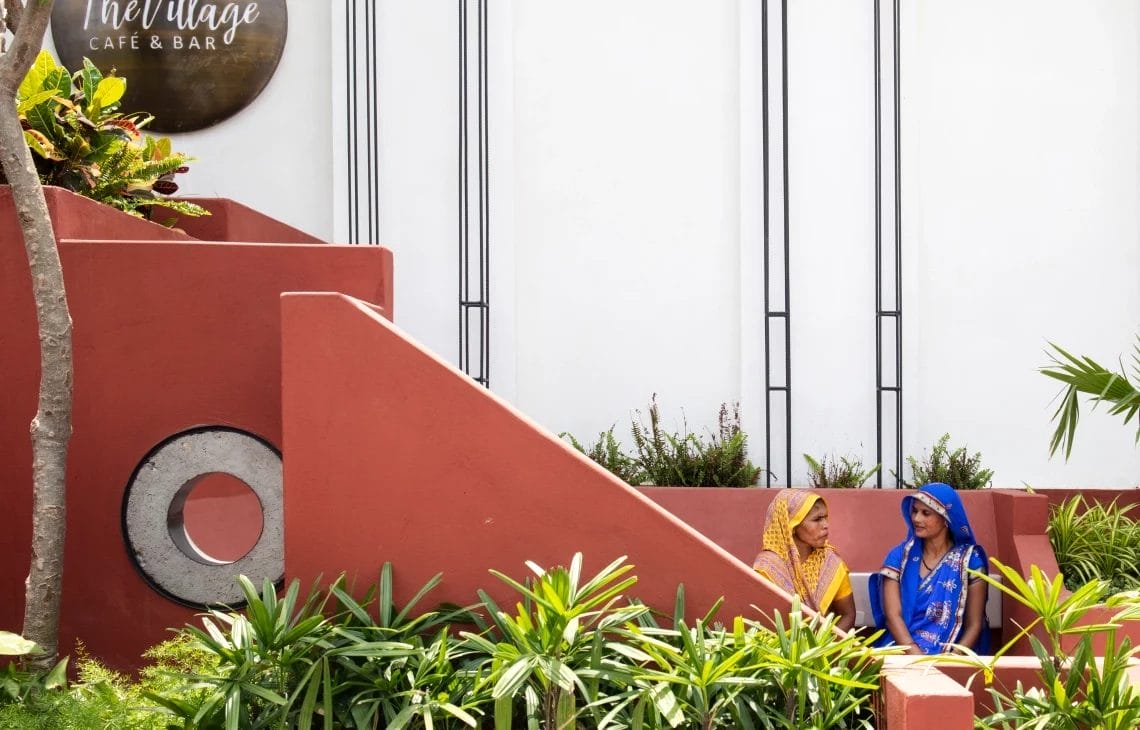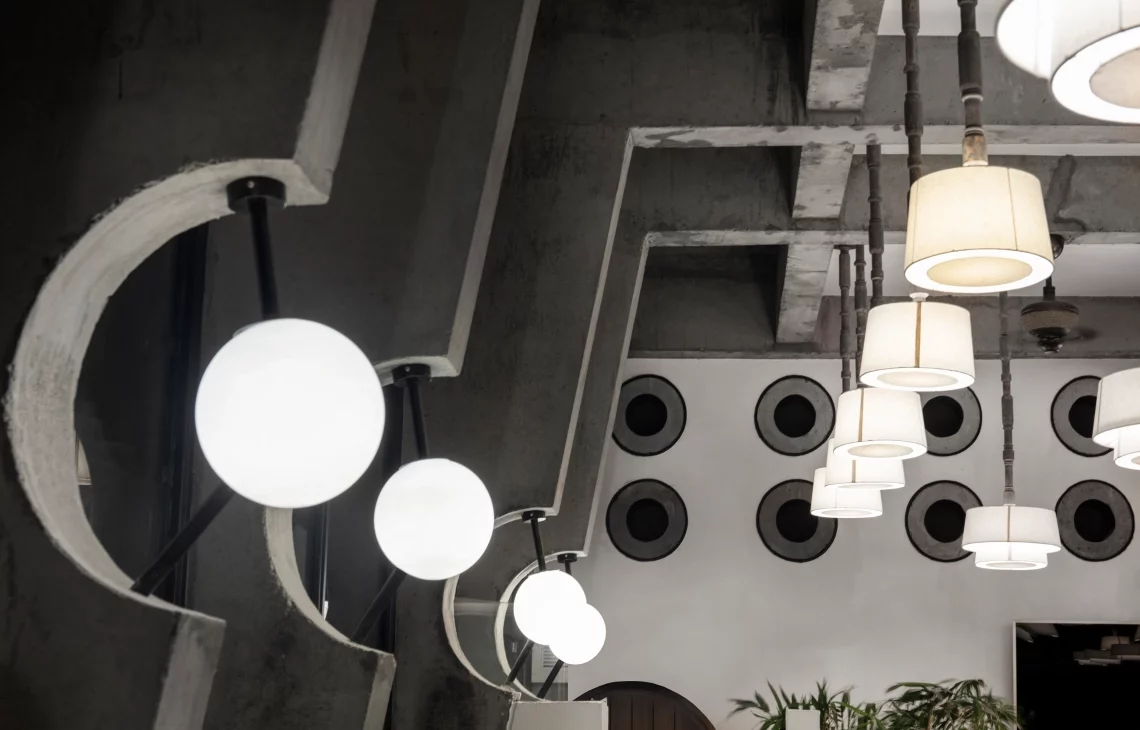
At the Village Cafe in Moradabad, U.P. This very philosophy is embodied in design that assumes a memory of the village and extracts from rustic materials to birthed textures and volumes that represent a lucid memory of a village. The café is located on Kant Road, an arterial highway that’s being transformed into a mixed-use street with both commercial and educational buildings in the works.
In a culture that adores speed, it is no wonder that people get burned out. And this brings in its wake an ongoing search for change to ‘safeguard’ against overwork, stress or burnout. This kind of cultural shift can be seen as the opposite of what happens in the fast-paced adoration of shiny new things. In this way, the Slow Movement reaches beyond the boundaries of the home and into society at large.

In the design world, the problem of speed is often concerned with new work and the need to produce it quickly. If a space has become more post-industrialized, vernacular architecture or at least a nod to this approach can be a powerful addition to the design. Many designers believe that high design is not necessarily about fast action, but about slow reflection.

Situated in a commercial complex, this 600-square-meter cafe is primarily an outdoor space with a smaller indoor area. The terrace, flush with terracotta-colored walls of varied volumes, references the experience of being in the midst of a village settlement.The modulated walls segregate and partially shield one sitting zone from the next, and invariably create the possibility of various movement patterns. The sensation of being removed from a city is anything but preposterous here.

The form of the planters and walls have been carefully modulated to achieve a surreal impression of rural settlements. The horizontal level shifts connected by diagonal volumes are inspired by spaces built with earth, like thatched huts with mud walls. The terracotta-toned plaster was achieved after trial-and-error refinements, adding a strangely familiar warmth and vibrancy to the space.
The eye is drawn from the fieriness of terracotta to a stark volume. The looming mass appears to be chunky, but the clever use of glazing sets off the unfinished texture of exposed concrete. This choice of materials reflects a humanistic approach to architecture. The use of exposed concrete and glass in the canopy was done to highlight the cost and time efficiency of these materials compared to traditional construction methods, which involve skilled craftsmen.

The exposed concrete rings that are circular perforations carry significance not only in terms of design but also intent: they are cast in curved iron sheets and inserted into the outdoor terracotta walls and indoor concrete walls as portholes offering glimpses across pockets of spaces.

Invasive and commercially widespread materials such as vinyl sheeting and styrene foam are puncturing and slowly spreading into rural spaces and building techniques. The Village Café features a design aesthetic blending rustic simplicity and modern minimalism. This is especially evident in the concrete fins, which function as sun shades during the day and as receptacles for customized Moonlights by Dbel Studio at night.

There are various layers of interaction between the old and the new in the museum. Our intent was not to fuse traditional with modern but to develop a modernity that is rooted in traditions, creating a surreal landscape that references, comments on, and explores the possibilities of design in our context.
At the Village Cafe, time slows down, as if to retrace the unhurried pace of life that once was. The cafe’s design contributes to its slowed pace.

Photo credits: Portal 92




















